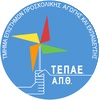Τα πραγματογνωστικά παιδικά βιβλία γνώσεων είναι έργα πολυτροπικά με μορφωτικό χαρακτήρα, που σκοπό έχουν να πληροφορήσουν παιδιά προσχολικής ή πρωτοσχολικής ηλικίας για οτιδήποτε τους περιβάλλει, μέσα από απλές και τεκμηριωμένες περιγραφές. Τα τελευταία χρόνια παρατηρείται η τάση των τέτοιων έργων να περιπλέκουν ηθελημένα το μυθοπλαστικό στοιχείο στις ιστορίες τους. Συχνά, η μορφή των σύγχρονων κειμένων είναι ιδιάζουσα, καθώς φέρουν χαρακτηριστικά της μυθιστορηματικής βιογραφίας, της αυτοβιογραφίας και των παιδικών εικονοβιβλίων, επιβεβαιώνοντας την υβριδικότητα του είδους. Εν προκειμένω, θα εξετάσουμε το έργο της Στέλλας Κάσδαγλη 30 γυναίκες που άλλαξαν τον κόσμο και πως μπορείς να τον αλλάξεις κι εσύ (2020), και τον Άτλαντα σπουδαίων προσωπικοτήτων. 101 προσωπικότητες της Ιστορίας που άλλαξαν τον κόσμο (2019) της Μιράλντα Κολόμπο. Θα μας απασχολήσει πώς οι συγγραφείς επιχείρησαν να πληροφορήσουν τα παιδιά για την ενασχόληση των γυναικών με τις Επιστήμες, με σκοπό να τα καταστήσουν επιστημονικά γραμματισμένα και να συμβάλλουν στη διακοπή της αναπαραγωγής διακρίσεων και ανισοτήτων, ιδιαίτερα όσον αφορά στην ενασχόληση των γυναικών με τις Επιστήμες και την Τεχνολογία.
(EL)
Children’s informational books are multimodal and serve an educational purpose. Their primary goal is to inform children of pre-school age and early-school age about the world they live in through simple documented descriptions. However, in recent years, many children’s informational books intentionally weave fictional elements into their stories. These modern texts are often idiosyncratic and share common characteristics with elements found in fictional biography, autobiography and children’s picture books, a fact which confirms the hybridity of this new emerging genre. When the books are biographical or autobiographical, incentives are assigned to the characters who expose parts of themselves as they are being revealed to their readers. In these types of narratives, the characters are considered to be invented and the reality of what shapes their actions is defined as being semiotically organized. This article deals with children’s informational books with an autobiographical content in whose pages reality and fiction intertwine and identities are reinvented. We will examine how two women authors engage their readers in a textual game of discovering the identity of the female scientist narrators who act as role models by supplying information on their activities. We will see how they blend real information with the powers of the imagination as well as how they attempt to bust stereotypes in the male-dominated scientific field. More specifically, we examine Stella Kasdagli’s book 30 women who have changed the world and how you can change it, too (2020) and Miranda Colombo’s Atlas of important people: 101 historical figures who have changed the world (2019). We shall explore the ways in which these two authors inform their young readers of the role of women in the Sciences not only in order to educate them on scientific matters but also to contribute to the eradication of gender discrimination and inequality, specifically where women in the fields of Sciences and Technology are concerned. Methodologically, qualitative content analysis was used in combination with the tenets of New Criticism. Basic categories include theme, characters, setting, the narrator and the ideological content and poetics of the chosen authors. The final result of informational books also involves the intentions of the illustrator and raises issues about young reader/spectator the response. Therefore, by extension, the aesthetic value and the semiotics of the images are also examined in order to ascertain whether they present a unified visual and semiotic whole and whether they complement or usurp the linguistic version of the text. The basis for all of the above is the classification of Nikolajeva και Scott (2001) and the theory regarding the ‘grammar’ of the visual text as formulated by Kress και van Leeuwen (2003).
(EN)

